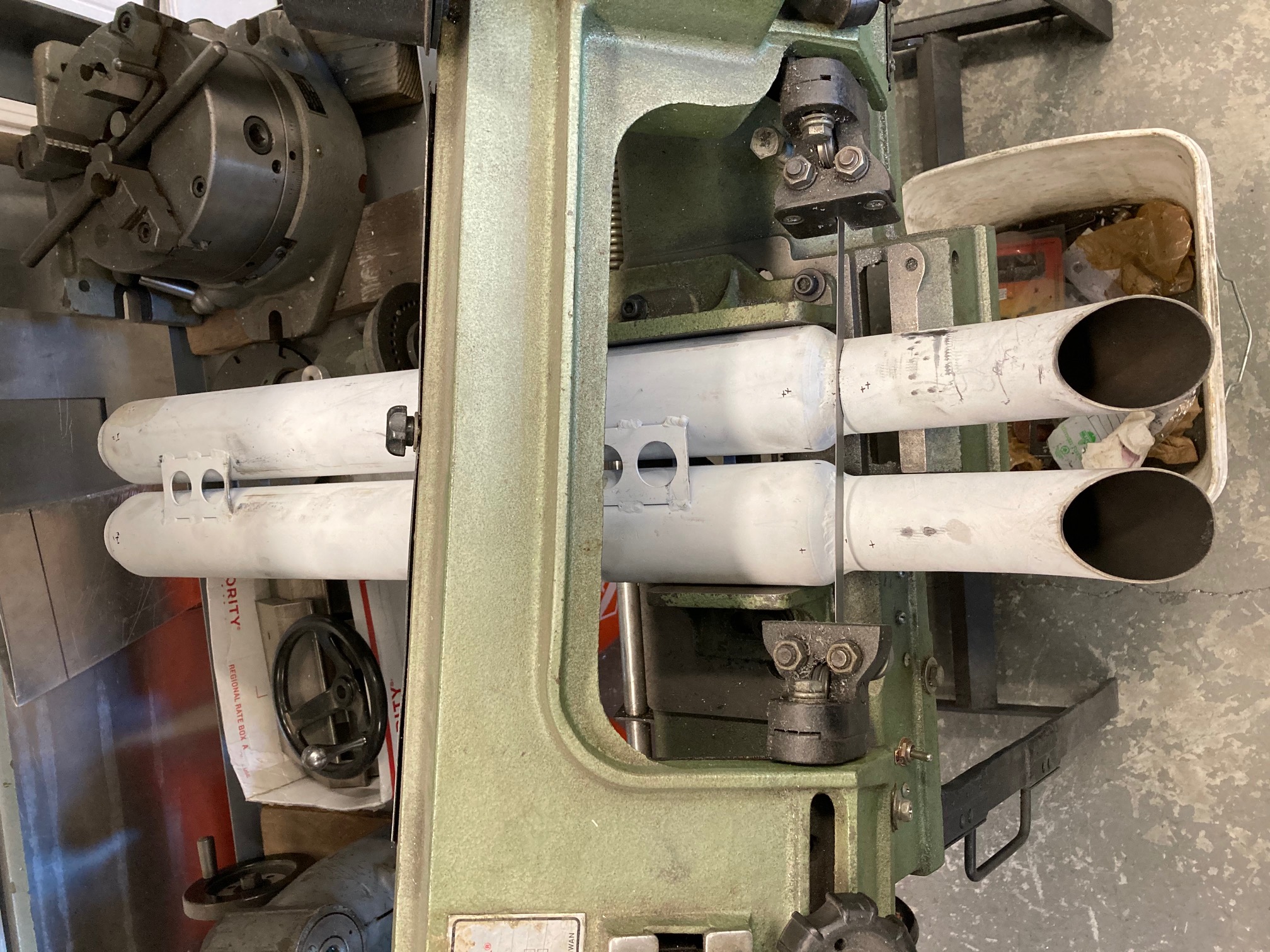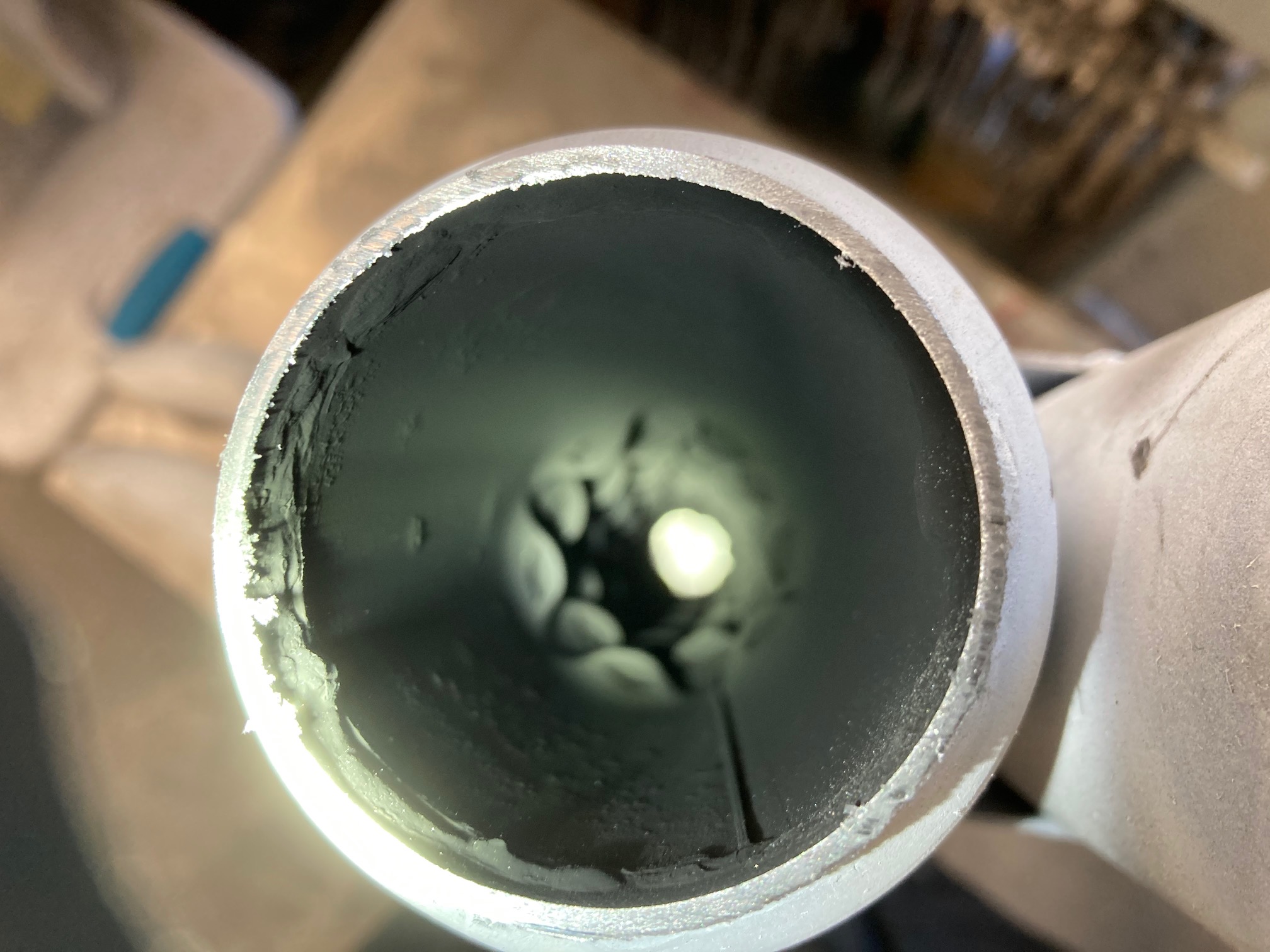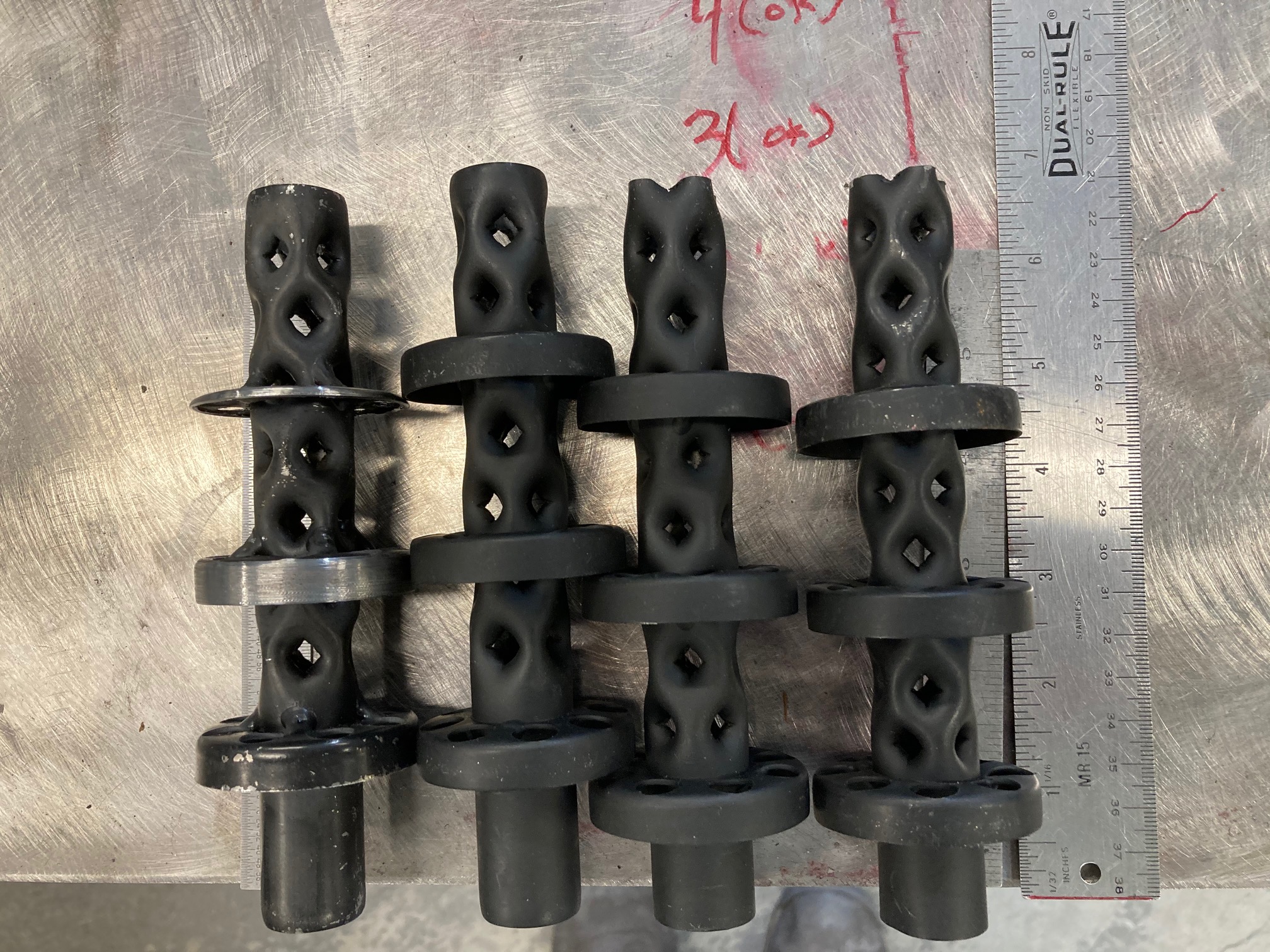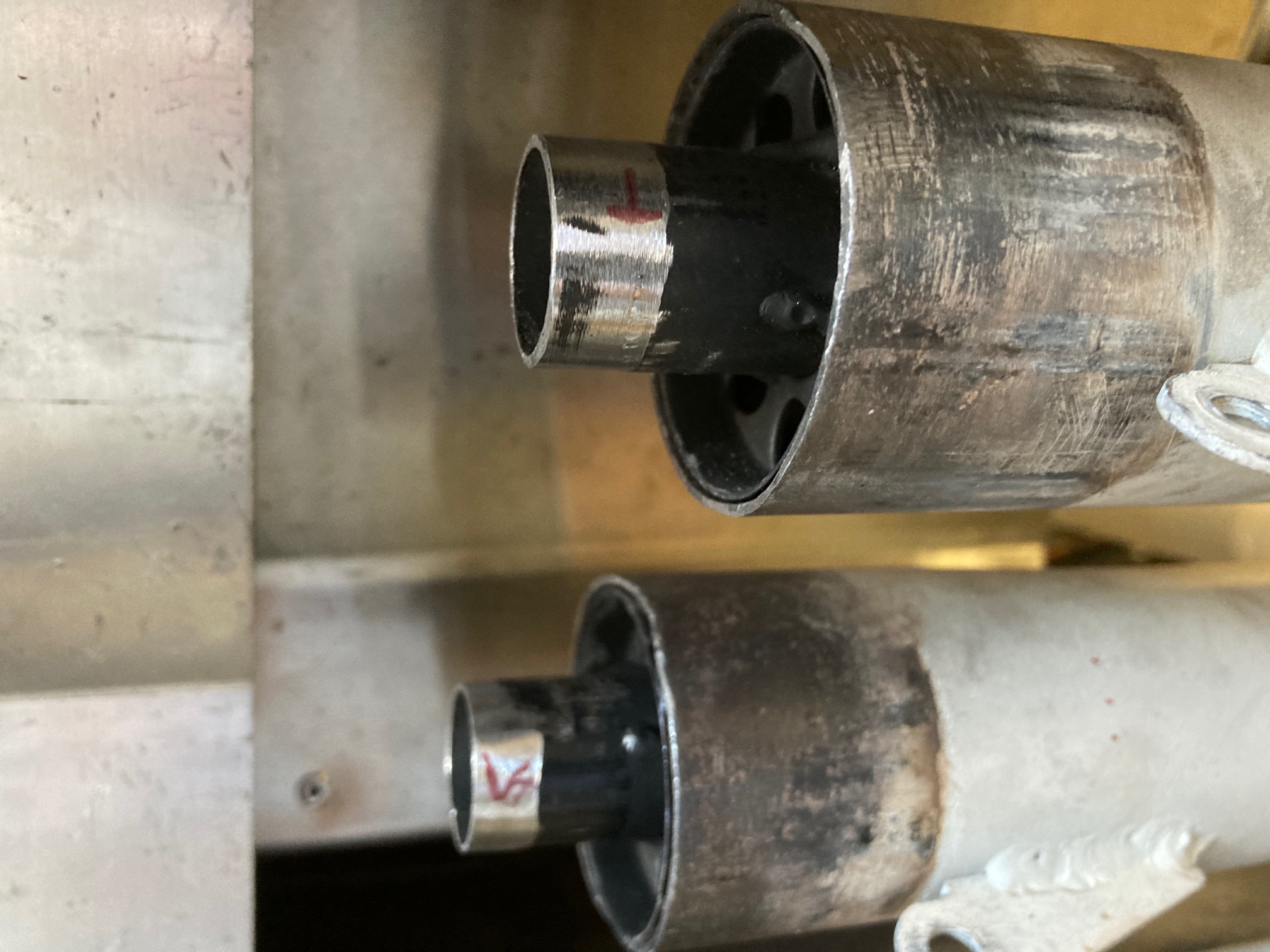Welcome to Our Garage
Daytona Coupe, 289 and 427 Cobras
-40-
Daytona Coupe Cobra -
Making a Daytona Coupe Quiet(er)
A Quiet Daytona Coupe?
Obviously the origin of the Daytona was for competing on road racing courses where noise was never a concern. I want to use my car for diving on the street; therefore, the exhaust noise is a significant consideration.
The engine exhaust on the Daytona routes through four separate glasspack style mufflers; two mufflers per side. The glasspacks have internal "louvers or "scoops" that are cut into the internals of the muffler pipe that are directional. The scoops can either be installed facing the incoming exhaust gas flow or with the scoops facing in the direction of flow (i.e toward the outlet).
My original installation had the glasspack "scoops" facing the in the direction of flow and therefore they had minimal (if any) effect on the noise reduction. For longer drives at highway speeds, I would typically use earplugs to temper the noise.
After installing the Webers on the car, it was time to rethink the exhaust system noise. I considered (at least briefly) using a more traditional muffler design, but there is simply no place to install a traditional muffler on the Daytona. More importantly, I want to keep the original Daytona sidepipe design.
The first obvious change was to flip the original glass packs so that the internal scoops faced into the direction of exhaust flow. I was not expecting any real significant reduction of noise by this modification; however, it was a relatively simple change. The photo below shows the outlet tips and inlet slip joints being cut off the original glass pack installation prior to being flipped end for end.

Looking closely at the following photo the series of small "scoops" or internal "louvers" can be seen. The inlet sleeves and the outlet tips were rewelded onto the glass pack mufflers so these scoops were facing into the exhaust gass flow.

The second modification was installation of baffles into the system. Certainly the baffles will introduce restriction of the exhaust flow, but since my car is used on the street, I am willing to accept the reduction in power for a quiter drive.
I found a noise reduction product that slipped into the 2" pipe of the header collectors ahead of the glass pack. The noise reduction is provided by restricting the exhaust flow with a series of disks in combination with a perferated central tube. The number of disks can be changed and the center tube may be altered by adding inlet and / or exhaust "caps" containing holes of varing diameters to further adjust their flow charactistics and therefore the nose level.
The insert manufacturer (Car Chemistery) indicated that due to variations in exhaust tubing wall thickness it is sometimes necessary to reduce the outside diameter of their inserts to fit into the header. This was in fact the case for my installation. The following photos show the inserts and some preliminary modifications for fitting them into the headers. The "caps" are not yet installed and the insert on the right side of the photo was an experiment in reducting the diameter.

A photo of the three disks inserts with the inlet cap installed that was used for the first noise reduction trial. I was curious about the overall effectiveness of the noise reduction versus the power loss the inserts would create. For the first test, I decided to simply take a "middle of the road" approach and not install the outlet cap. I could always tack the outlet caps on the next timeif the car was not quiet enough.

A photo of the initial trial istallation of the inserts into the header collector; three disks, inlet cap and no outlet cap.

I anticipate the need for some adjustment of these inserts to dial in the noise versus restriction. However, I want to spend some time on the road simply getting used to the baffle effectiveness before starting any modificatons. Removal of the inserts for future modifications is relatively straightforward. Since the inserts are a relatively snug fit in the exhaust header and they are prevented from moving reward by an internal flange on the inlet of the muffler section, a tack weld to hold them in place was not even required for the first tests.
Judge for yourself
The follow short video of one of my early road tests. The engine had only an initial tune on the Webers and with the glass pack baffle modificaitons had been completed. Judge for yourself. (Even though it is only a short mp4 format video, give it a little time to load.)
Turn the sound up, sit back and listen.
Daytona test drive with new Weber engine and muffler insert modifications
Ignore the high tech fresh air duct control on the right side of the dash (also known as a shop towel - it was cold that day) and focus the drive itself.
You gotta love the sound of Webers.